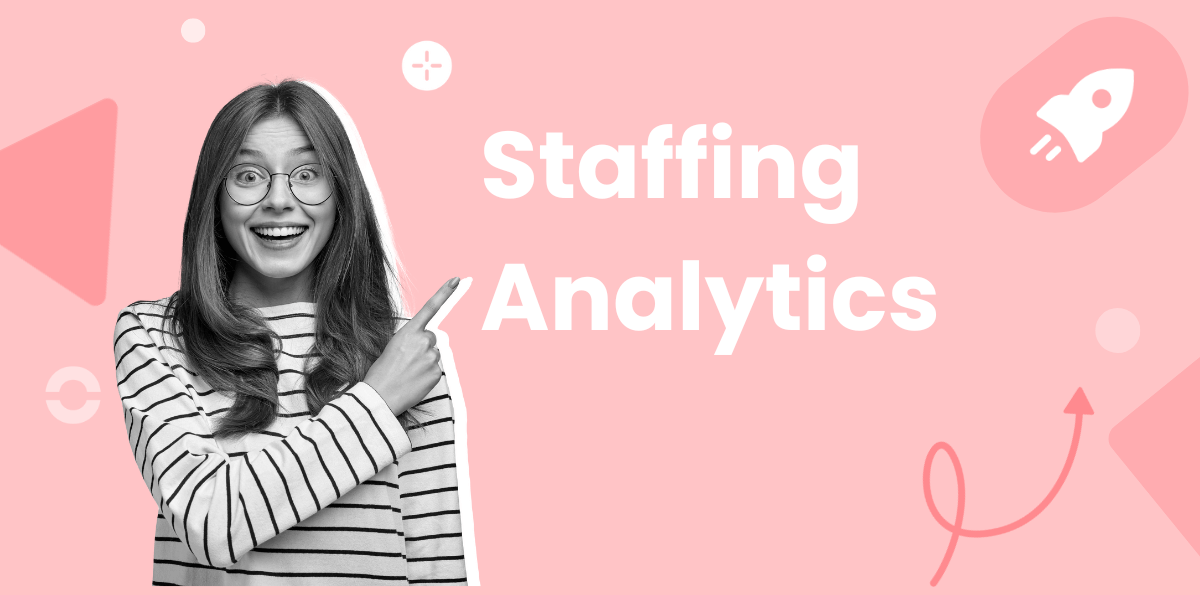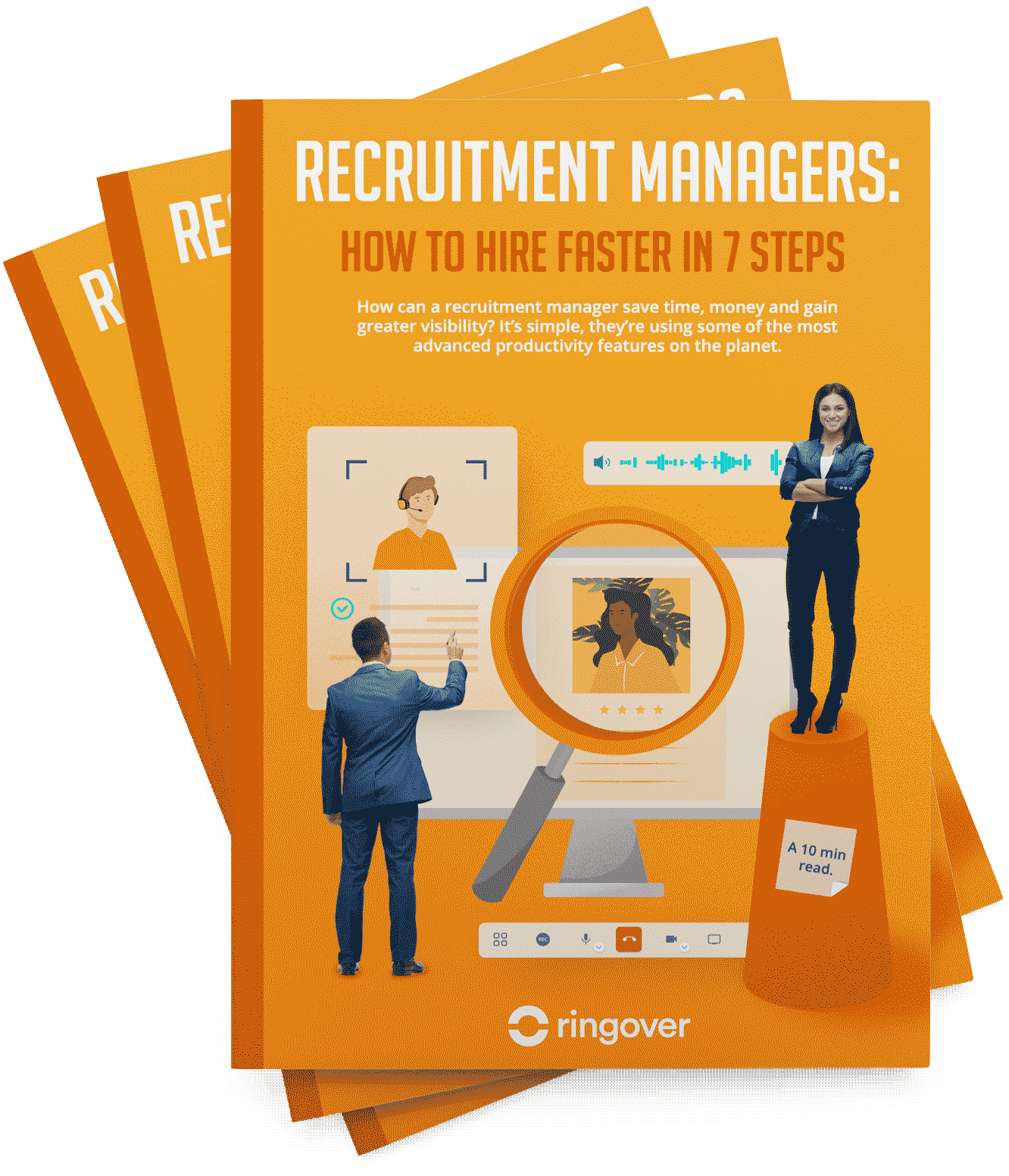Summary
In this article, we take a look at the definition of staffing analytics, its benefits for optimizing staffing and workforce planning, and address commonly asked questions on the topic. Discover how leveraging data in your recruitment strategies can provide you with a competitive advantage in the industry and help you meet your business objectives.
Try Ringover for StaffingWhat is the meaning of staffing analytics?
Staffing analytics utilizes data-driven approaches to enhance staffing and workforce planning. This method empowers businesses to make informed decisions regarding hiring, retention, and performance through data and insights. Essentially, it's a branch of people analytics aimed at monitoring, managing, and analyzing hiring process metrics.
This approach involves gathering, analyzing, and interpreting data to uncover insights into various facets of staffing and workforce planning. Through data analytics, companies can pinpoint job demand, assess candidate qualifications, and understand employee turnover rates, ultimately leading to improved staffing decisions.
Furthermore, staffing analytics is pivotal in optimizing and evaluating workforce planning and performance in effective recruitment by leveraging key performance indicators (recruitment KPIs).
Staffing analytics leverages a variety of data sources, including job posting information, industry trends, economic indicators, candidate profiles, employee feedback, and performance metrics. It also utilizes a range of tools and technologies, such as analytics platforms, software, and dashboards, for data collection, storage, visualization, and analysis. By adopting staffing analytics, organizations can secure a competitive advantage in the staffing sector and realize their business objectives.
How to use staffing analytics to optimize performance
Utilizing staffing analytics can significantly enhance your performance in key staffing and workforce planning areas, including recruitment process, retention, productivity, and profitability. The following are strategies for leveraging staffing analytics to boost your performance.
1. Recruitment
Tap into staffing analytics to attract and secure top talent for your companies . Utilize data to pinpoint the most efficient candidate sourcing channels, the ideal timing for job postings, the most effective keywords, and the key selection criteria for screening applicants. Furthermore, data can be employed to evaluate your hiring process's quality and efficiency, covering aspects like time-to-fill, cost-per-hire, and candidate satisfaction levels. Through a data-centric approach, you can slash hiring costs, expedite the recruitment process, and enhance the quality of your hires.
For example, Ringover's VoIP phone compiles analytics on staffing agents' performance like candidates' wait time when calling, the average call length, pick-up rate, and more. Thanks to insights from this business phone system, you'll be better positioned to understand your team and where you can improve.
Even software like Empower, a conversation intelligence software which automatically transcribes, summarizes and analyzes conversations via sentiment analysis, provides metrics like how many turns to speak each person has, if there are monologues, and more. This allows for conversations to be a key lever for optimizing candidate relationships.
3. Retention
Employ staffing analytics to keep your valuable employees onboard and minimize turnover. Analyze data to grasp the elements that drive employee engagement, satisfaction, and loyalty, such as competitive compensation, comprehensive benefits, targeted training, constructive feedback, and appropriate recognition. Data can also aid in detecting early warning signs of employee disenchantment, dissatisfaction, and potential departure, indicated by absenteeism, subpar performance, and critical feedback. With data-driven strategies, you can bolster employee retention, cut turnover expenses, and strengthen your employer brand.
4. Productivity
Staffing analytics can serve as a tool to optimize workforce productivity and efficiency. Use data to align your workforce planning with your business goals and identify existing skill gaps. Data assists in the effective allocation of resources, ensuring the right individuals are tasked with suitable responsibilities, shifts are optimally scheduled, and workloads are judiciously managed. A commitment to data-guided practices promises to elevate workforce productivity, efficiency, and overall output quality.
5. Profitability
Leverage staffing analytics to boost your business's profitability and revenue streams. Data analysis allows you to assess the contribution of your workforce to key business metrics, including revenue, profit margins, customer satisfaction levels, and market share positioning. Moreover, analytics can guide strategic business decisions related to pricing, marketing, and overall business strategy. Adopting a data-driven framework can further profitability, amplify revenue, and enhance your competitive edge.
Conclusion
Staffing analytics leverages data-informed methodologies to enhance staffing and workforce management. This approach enables organizations to make informed decisions regarding hiring, retention, and employee performance, utilizing data and insights. Through staffing analytics, you can significantly improve performance across various aspects of staffing and workforce planning, including recruitment, retention, productivity, and profitability.
To understand more about how Ringover and Empower can enrich your staffing analytics and provide a wealth of resources, you can start your free trial today!
Staffing Analytics FAQ
What is the role of predictive analytics in staffing?
Predictive analytics, a facet of advanced analytics, leverages statistical algorithms, machine learning, and data mining to scrutinize historical data, seeking patterns and trends to predict future events or outcomes. Within staffing, it empowers businesses to anticipate candidate success, gauge cultural fit, and foresee long-term engagement by evaluating critical data points like skills and experience. It also streamlines workforce planning and performance in recruitment and other areas, guided by key performance indicators (KPIs). Employing predictive analytics fosters a strategic approach in hiring and retaining top talent.
What is recruitment analysis?
Recruitment analysis, a subset of people analytics, monitors, manages, and assesses metrics linked to the hiring process. This encompasses sourcing, selection, hiring activities, and the resultant impact on retention and turnover rates. By pinpointing the strengths and flaws of your recruitment funnel, identifying bottlenecks, and suggesting enhancements, recruitment analysis enhances candidate experience. It further evaluates your hiring process's quality and efficiency, including time to fill, cost per hire, and candidate satisfaction, empowering you to make informed, data-driven decisions.
What is a staffing strategy?
A staffing strategy is a forward-looking plan detailing how an organization intends to address its immediate and future staffing requirements. It aligns recruitment, selection, and recruiting onboarding with organizational objectives to secure, keep, and nurture suitable talent. This strategy outlines necessary roles across business units, specifies essential skills and competencies, includes succession planning, budgeting for staffing, and continuous development to forecast and manage workforce needs in line with business goals. This ensures the effective allocation of resources, appropriate task assignments, optimal shift scheduling, and efficient workload management, thereby enhancing workforce productivity, efficiency, and quality.
What is staffing analytics and how does it differ from HR analytics or people analytics?
Staffing analytics involves using data and analytics to enhance hiring and retention. Unlike HR analytics or people analytics, staffing analytics zeroes in on the external labor market and aligns talent with business goals more strategically.
What are the benefits of using staffing analytics for talent acquisition and retention?
Employing staffing analytics equips teams with data-driven insights, improving the recruiting and onboarding processes, enhancing the hiring journey, and achieving business goals. Benefits include identifying hiring trends, evaluating recruitment channels' effectiveness, forecasting staffing needs, assessing candidate fit, streamlining processes and technology use, and deepening the understanding of how talent acquisition influences business outcomes.
What are some of the tools and staffing technologies that enable staffing analytics?
Key tools and technologies facilitating staffing analytics include:
- Applicant Tracking Systems (ATS), for gathering and organizing candidate data like resumes, skills, and feedback.
- Sourcing Automation Tools, for attracting qualified candidates from various sources, including social media, job boards, and referrals.
- Analytics and Benchmarking Tools, for evaluating and benchmarking staffing and workforce planning performance, such as hiring time, retention rates, and productivity.
What are some of the best practices and challenges of implementing staffing analytics in an organization?
Best practices for implementing staffing analytics entail aligning analytics strategies with business objectives, emphasizing data quality and integrity, utilizing visual and predictive analysis tools, and cultivating a data-centric culture. Challenges include navigating privacy and ethical concerns, breaking down data silos, enhancing analytical skills within the team, and measuring the analytics' impact and value comprehensively.



